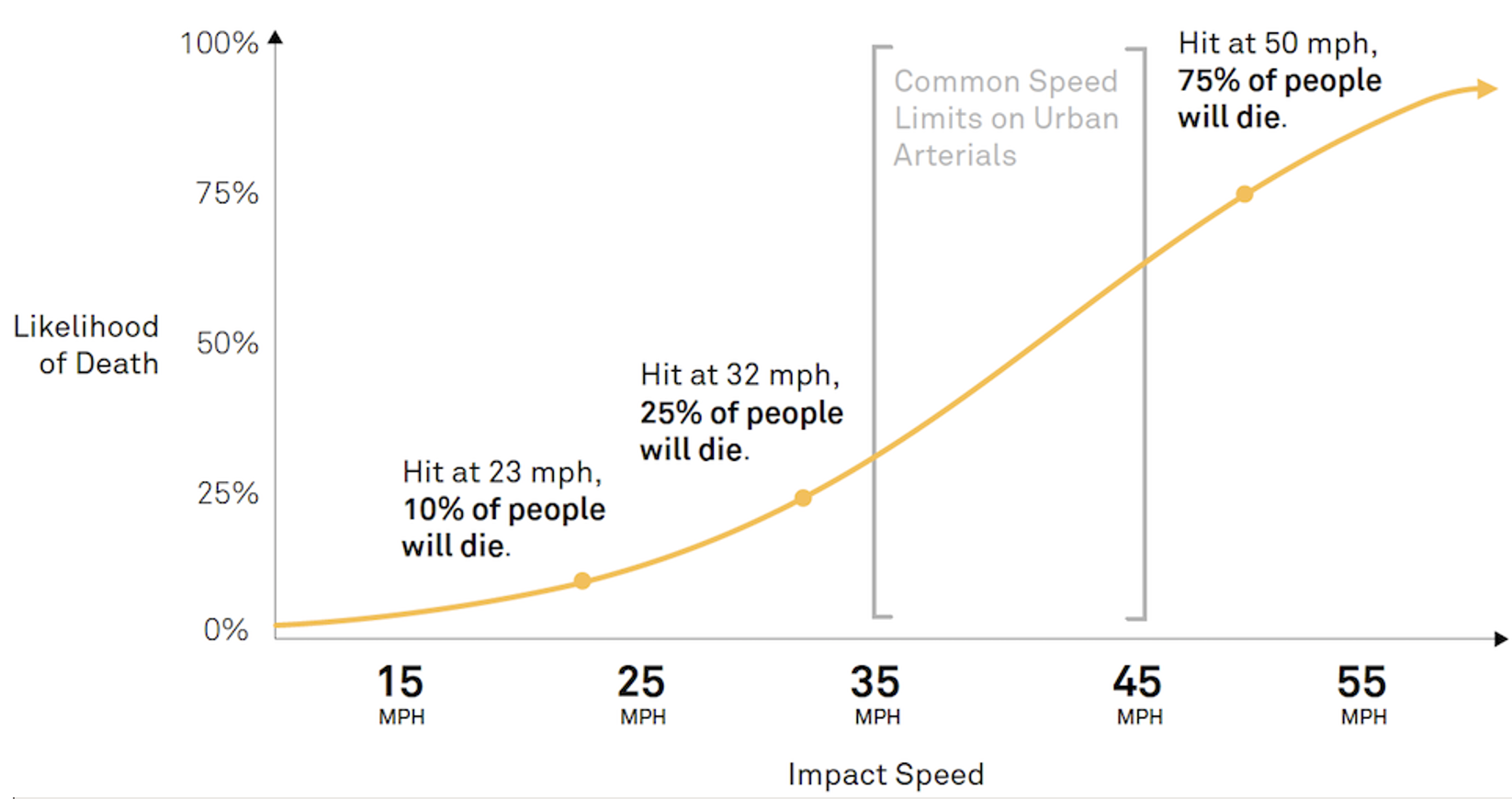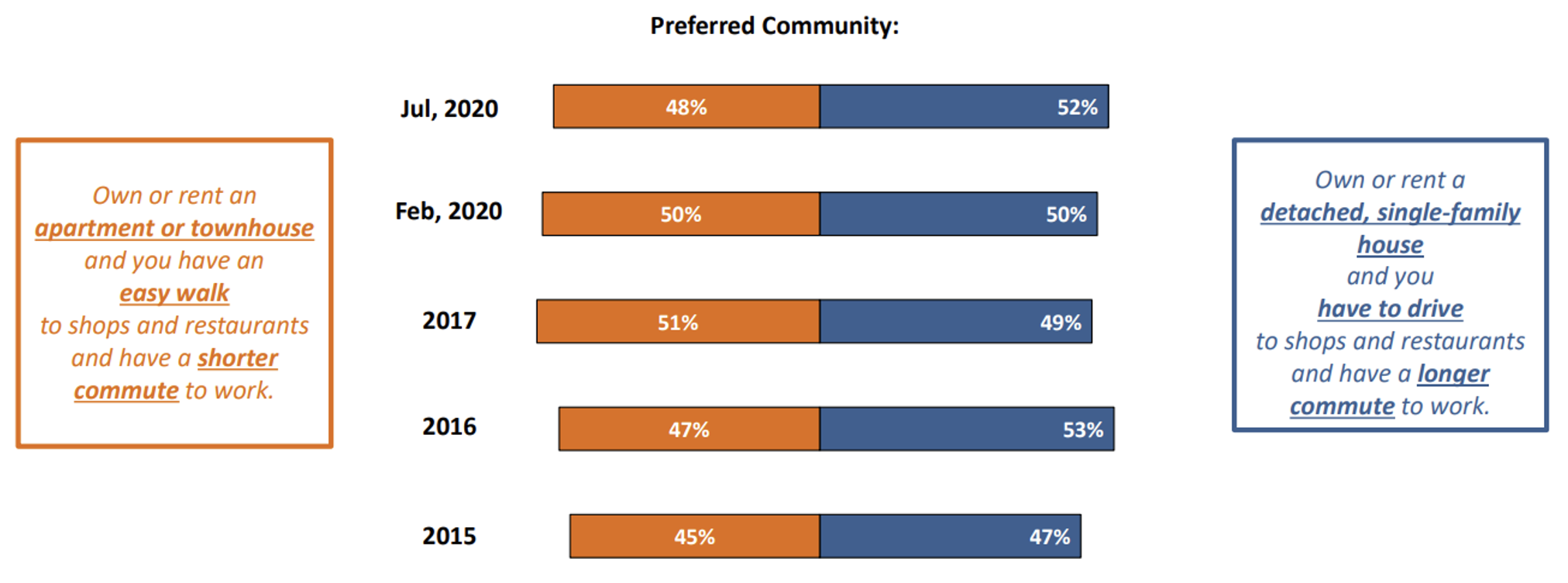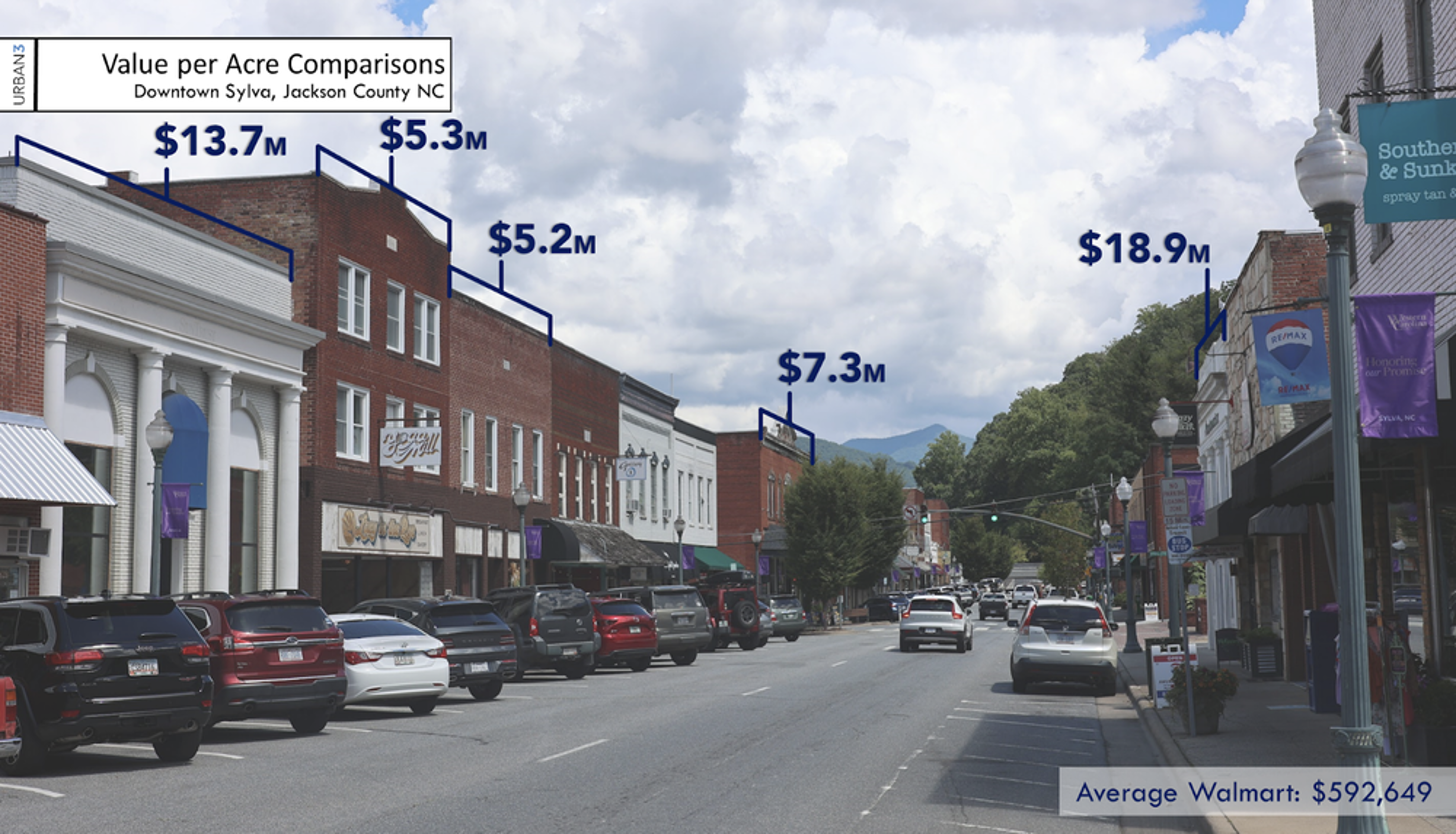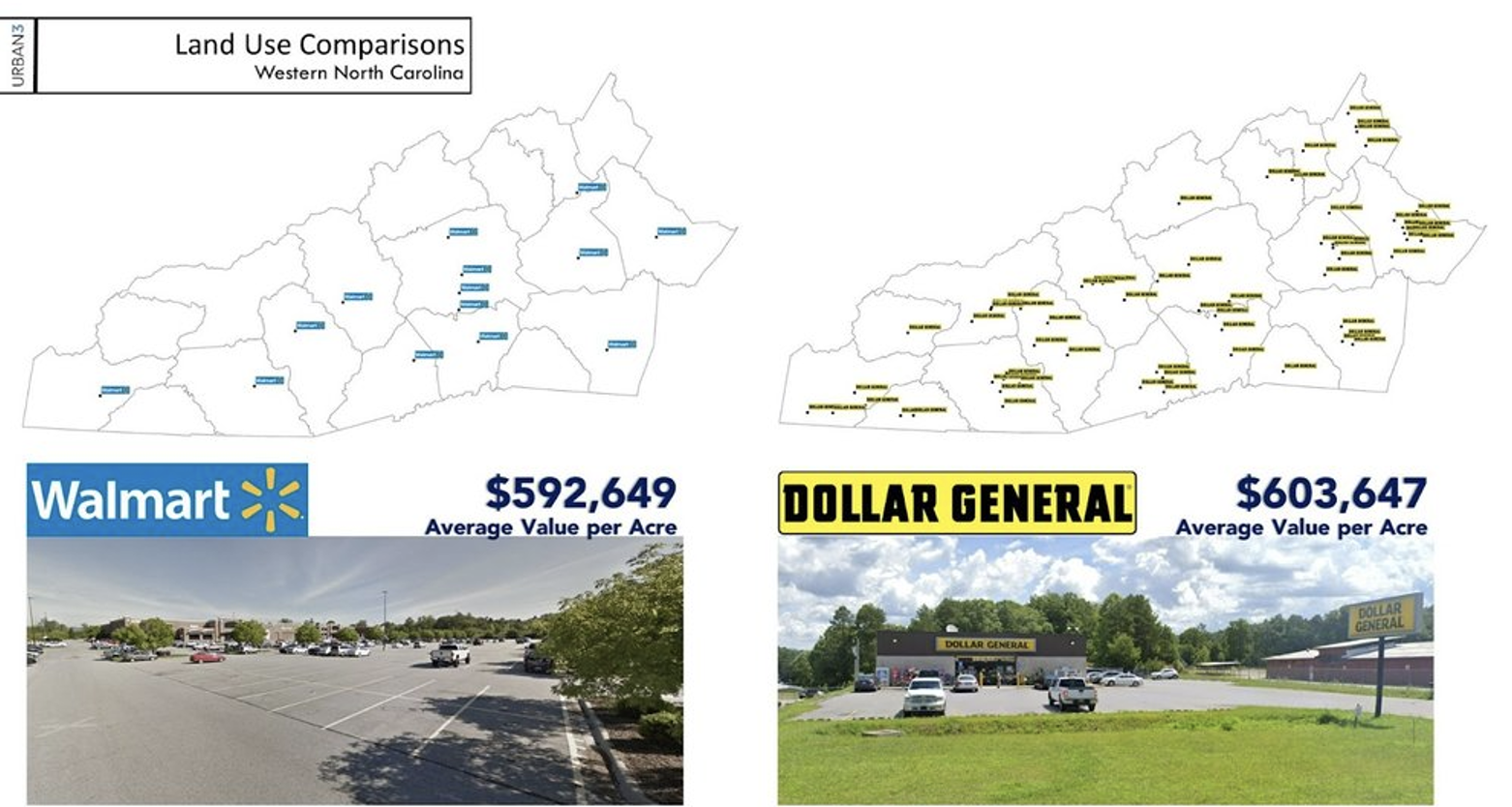Driving Progress: Health and Economic Effects of Arterial Thoroughfare Design

Table of Contents
Author(s)
Share this Publication
- Print This Publication
- Cite This Publication Copy Citation
Zoabe Hafeez, “Driving Progress: Health and Economic Effects of Arterial Thoroughfare Design” (Houston: Rice University’s Baker Institute for Public Policy, January 10, 2024), https://doi.org/10.25613/0909-VC21.
Introduction
Car-based transportation in the United States began in the early 20th century. Before that, the country was primarily dependent on walking, cycling, and public transportation, including horse-drawn vehicles and the railways. As the automobile industry grew, the U.S. government constructed arterial thoroughfares and highways to accommodate the growing demand. For most of the 20th century, the popularity of the automobile reflected a growing desire for transportation convenience, flexibility, and speed. It also enabled the development of land that had previously been too far from job centers, ushering in an age of suburbanization that allowed average families to enjoy houses, greenery, and a respite from polluted urban cores.[1]
The focus of this brief is arterial thoroughfares, also called arterial roads or simply “arterials.” Locally, arterial thoroughfares in the Houston area are called “major thoroughfares” and are almost always high speed, multilane, at-grade thoroughfares without controlled access that are aimed at moving heavy traffic between different areas of the region.[2] In the road hierarchy they fall below higher-speed, controlled access highways and above slow-speed, neighborhood-connecting collector roads.[3]
However, arterial roads are increasingly a matter of controversy.[4] These roads have been built to maximize motor vehicle speed, providing minimal safe transportation options for those without a private motor vehicle. Additionally, despite recommendations by the Federal Highway Administration (FHWA), many arterial roads attempt to maintain high motor vehicle speeds while simultaneously increasing access to local roads and business driveways.[5]
The transportation departments that design these roads have to balance mobility and safety considerations. Also factoring into the design mix are public comments (often drivers’ frustrations about traffic), mobility metrics such as congestion rates and projected population growth, and safety analysis, which is based on reported crash metrics with only secondary consideration of pedestrians. The effects of road design on adjacent commercial development, economic metrics of new development, or the attractiveness of the pedestrian realm are not often considered.[6] This leads to departments focusing primarily on increasing motor vehicle capacity, which can mean they are not following their own best practices.[7]
In the following sections, this brief will explore the potential consequences for public safety, walkability and its effects on physical and social health, and the limitations on economic flourishing resulting from the historical approach to arterial road design.
Transportation Injuries: High Speed and High Conflict Frequency
Although it was initially among the safest, the American transportation system has now become one of the least safe in the developed world.[8] Within the United States, there is a wide variation in safety performance, with higher motor fatality rates being closely linked to the increased number of high-speed conflicts on arterial road systems designed in the mid to late 20th century.[9]
- Older American cities that experienced most of their urban growth prior to the automobile are roughly two to three times safer than sprawling Sun Belt cities that grew most during the automobile era.[10]
- In 2020, newer cities like Dallas and Houston had transportation fatality rates of 14.5 and 10.6 per 100,000 people respectively while older cities like New York and San Francisco were below 3.[11]
The Problem of the “Stroad”
Charles Marohn, an author and retired civil engineer, coined the term “stroad” to describe many nonhighway arterial thoroughfares designed in the 20th century. The word is a portmanteau of “road” and “street” and describes high speed, multilane, fast-moving arterials that also attempt to support commercial activity on either side. This street/road hybrid combination leads to frequent conflicts, as having multiple unprotected street or driveway access points per block increases the risk of a crash for every road user.[12]
Additionally, the high speeds encouraged by stroads increase the likelihood that a crash could be fatal or result in serious injury. This is one reason for the differences in transportation death rates between sprawling and more compact urban areas. As Figure 1 shows, potential conflict at a lower speed may be avoided and, even if there is a crash, it is more likely to be minor. At a higher speed, it is more likely to be unavoidable and fatal.
Figure 1 — The Likelihood of Fatality Increases Exponentially With Vehicle Speed

Active Transportation and Lowering Speed Limits
The term “active transportation” includes cyclists, pedestrians, and other noncar transport.[13] The National Association of City Transportation Officials (NACTO), a coalition of North American departments of transportation, has released guidance on how to lower speed limits on roads that include commercial activity and active transportation.[14]
There is a body of evidence suggesting that this works, including a study of the Gulfton area in Houston.[15] In areas with high commercial activity, arterial thoroughfare redesigns built around slower speeds decrease the frequency and severity of transportation injuries.[16] Typically, the effect on transportation times is either negligible or less severe than predicted by modeling as road users will adjust travel times, methods, or routes to adapt. [17]
Decreasing motor vehicle speed and conflicts through thoughtful arterial road redesigns also increases active transportation activity beside these roads. This decreases pedestrian and bicyclist injury through a “safety in numbers” phenomenon: The more nonmotor vehicle road users there are, the safer they collectively are.[18]
Both Marohn and the FHWA have advocated for a clear linkage between high speeds and limited access. Marohn has gone so far as to say that arterial thoroughfares should have no commerce and limited driveways lining them to ensure safe high-speed traffic. The FHWA, while less binary, has made similar recommendations to limit road access on high-speed arterials.[19]
Physical and Social Health Benefits of Walkability
While arterial thoroughfares are designed to move high volumes of traffic between places within a metro area, it is important to also consider their effect on nearby pedestrian activity. An annual National Association of Realtors survey shows a roughly 50–50 split for walkable communities throughout all age groups as shown in Figure 2, and this continued during the COVID-19 pandemic.[20] An annual Rice University survey of Houston area residents reveals similar results.[21] Home value data supports this preference, which is at least partially due to the physical and social health benefits of walkability.[22]
Figure 2 — Preference for Attached Walkable Home With Shorter Commute Versus Detached Home With Longer Commute

Arterials can promote communities’ creation of walkable street networks or prevent them.[23] While speed is a factor, the frequency and quality of safe sidewalks, crosswalks, and bicycle infrastructure play a large role as well. Three of the most widely-used best practices to improve walkability near arterials are 1) well shaded, wide, buffered sidewalks, 2) attractive greenery, and 3) a high frequency of protected, quality intersections.[24]
Community Effects on Child Health
Walkable communities have been associated with decreases in obesity, diabetes, respiratory disease, heart disease, and some cancers.[25] They are also associated with an increased proportion of children walking or biking to school.[26] Fifty years ago about 50% of children walked to school — the percentage has declined to less than 15% today. Arterial thoroughfares with frequent and safe pedestrian crossings have been proposed as part of the solution to this multifaceted problem.[27]
Living near large roads has been connected to children having increased rates of asthma, while for pregnant mothers there are associations with lower birth weight, developmental delays and decreased IQs in their unborn children. Although much of this research was done on highways and freeways that have even higher levels of traffic, arterial thoroughfares likely have similar, though attenuated, effects on those living nearby.[28]
In contrast, newer thoroughfares that cater to those outside of motor vehicles are linked with an increase in children walking and biking to school, increased spatial knowledge development, and decreased neighborhood crime.[29] In combination, these factors can promote increased health and independence in children.[30]
Communities and Cohesion
The consumer desire for walkable communities is also likely due to a growing realization that many large arterial thoroughfares have the power to increase community isolation. A landmark study in 1972 looked at residents of a busy, high speed road and a similar but less trafficked road and found that those in the former were less likely to leave their house, know their neighbors, or feel like their street truly belonged to them.[31] Additionally, living on highly trafficked roads may lead to increased social isolation, loneliness, and psychological distress, with decreased social cohesion.[32]
The frequently mentioned loneliness epidemic, based on a perception that people of all ages have fewer close relationships than in the past, may be partially explained by the built environment.[33] Factors such as these may influence feelings of loneliness:
- Arterial thoroughfares can form a de facto blockade against pedestrian movement. Fast moving traffic makes it difficult for adults and children to safely walk or play and increases the risk of injury to those who engage in recreational activity outside of their homes.[34]
- Thoroughfares designed with pedestrian safety and mobility in mind are associated with socially interconnected, vibrant, livable adjacent neighborhoods.[35]
- Walkable neighborhoods are associated with more robust social networks, higher trust, and higher reciprocity than car-dependent ones.[36]
Economic Flourishing
The age of motor vehicles opened up the possibility of developing previously inaccessible suburban land. Suddenly, large tracts were available, enabling the construction of lower-priced homes and fenced backyards away from the polluted urban cores.
However, as these original suburbs age, questions have arisen as to whether the resulting suburban developments — with commerce built on arterial thoroughfares — are able to hold their value compared to traditional, walkable commercial areas. Two contrasting points to consider:
- Big box store tenants are harder to replace when they leave as the large units have a more limited pool of potential occupants and the resulting blight has cascading effects on neighborhood crime and desirability.
- Smaller storefronts in traditional developments can be more easily leased, for example by a local resident who would like to try their hand at a small business like a nail salon, barber shop, or restaurant.
Benefits of Traditional, Mixed-Use Neighborhoods
A growing body of literature suggests that traditional, mixed-use neighborhoods increase the value of residential and commercial properties, decrease commercial vacancies, increase local tax take, and reduce public expenditure.[37]
Urbn3, an urban planning consulting firm, has performed case studies on a variety of cities and maintains that traditional developmental styles generate more tax revenue per acre while requiring lower ongoing infrastructure costs.[38] This occurs for a few reasons.
- Perceived value of attractive, walkable communities. The low supply and high demand for these types of communities means that office, retail, and residential buyers are willing to pay a premium for the limited supply. By one measure, only 6% live in a neighborhood where most errands can occur on foot, despite almost half of Houston area residents preferring this style of development.[39]
- Decreased need for parking lots. Houston is estimated to have 30 parking spaces per resident.[40] Though this number is hard to prove, the vast parking lots that accompany a typical strip mall or big box retail store make it difficult for their per acre valuation to compare favorably to that of a traditional, walkable commercial or mixed-use district. Figure 3 shows the high values per acre in a traditional commercial district: Compare with those of big box stores in Figure 4.
Figure 3 — Value per Acre Comparisons

Figure 4 — Land Use Comparisons

- Decreased infrastructure costs. Due to the number of residents who do short trips by foot or bicycle, traditional neighborhoods typically require smaller streets. In addition, as these neighborhoods tend to be able to group their businesses more closely together and offer shared or street parking, their more compact footprints means that services such as water pipes, sewage lines, electrical lines, and other infrastructure span shorter distances, thus reducing costs.
A Complication: Building Regulations
Although beyond the scope of this brief, it is important to note a complication that has limited traditional development patterns: municipal building regulations. Many cities and towns have regulations on zoning, parking minimums, minimum lot sizes, and set back requirements that preclude traditionally walkable development.[41] As a result, even appropriately designed arterial roads that serve these highly regulated areas may find there are minimum economic gains to be made, which may serve as a deterrent to investment.
Conclusion
New arterial thoroughfares or redevelopment of existing thoroughfares offer stakeholders the opportunity to gradually move their region into a healthier and more economically sustainable model. While the throughput of people and goods is an important metric of any thoroughfare analysis, there are also other, complementary, outcomes to consider. As the Houston area transitions to meet the needs of a new generation, these are some additional criteria to take into account:
- Active transportation injuries.
- Economic output per acre.
- Perceived pedestrian comfort.
Arterial thoroughfares may either enhance or diminish adjacent neighborhoods’ ability to build in a high value and low-cost style. Best practices of arterial redesigns to maximize economic value have included providing a safe, shaded, and comfortable pedestrian realm, multimodal transit options, comfortable mass transit options, and green space.[42]
When faced with a thoroughfare redesign, stakeholders should ask these questions:
- Should this be a slow street with pedestrians and commerce, or should this be a fast road with limited access?
- If the former: Would I feel comfortable strolling on this street with my family?
Increasing sidewalk width, providing adequate shade on footpaths, installing high-quality crosswalks, and minimizing nonsignalized points of conflict with motor vehicles may all contribute to improving the answer to the second question.
One final point: Improving area building codes to either limit commercial zones on fast moving roads or allow for signalized turn-offs to walkable commercial areas may simultaneously improve traffic flow and safety while reducing injury and death.
Notes
[1] Howard Frumkin, Lawrence Frank, and Richard J. Jackson, “The Origins of Sprawl,” in Urban Sprawl and Public Health: Designing, Planning, and Building for Healthy Communities (Washington, DC: Island Press, 2004), 26–43.
[2] “Major Thoroughfare and Freeway Plan (MTFP),” City of Houston Planning and Development Department, https://www.houstontx.gov/planning/transportation/MTFP.html.
[3] U.S. Department of Transportation Federal Highway Administration, Road Function Classifications, November 2020, https://safety.fhwa.dot.gov/speedmgt/data_facts/docs/rd_func_class_1_42.pdf
[4] Megan Kimble, “The Road Home,” The Texas Observer, July 12, 2021, https://www.texasobserver.org/the-road-home/.
[5] Josue Pluguez, “Make Complete Streets the Default Approach,” U.S. Department of Transport Federal Highway Administration, last updated November 28, 2023, https://highways.dot.gov/complete-streets/make-complete-streets-default-approach; Sarah Goodyear, “Defining the Worst Type of Street Design,” Bloomberg, January 7, 2014, https://www.bloomberg.com/news/articles/2014-01-07/defining-the-worst-type-of-street-design.
[6] Texas Department of Transportation, Roadway Design Manual, revised December 2022, http://onlinemanuals.txdot.gov/txdotmanuals/rdw/rdw.pdf.
[7] Houston-Galveston Area Council, 2045 Regional Transportation Plan Summary, accessed September 1, 2023, http://2045rtp.com/documents/plan/2045-RTP-Executive-Summary.pdf; Cambridge Systematics, Inc and Alliance Transportation Group, Congestion Management Process Update, January 2015, http://2045rtp.com/documents/plan/Appendix%20B%20-%20Congestion%20Management%20Process%202015.pdf; David Zipper, “The Unstoppable Appeal of Highway Expansion,” Bloomberg, September 28, 2021, https://www.bloomberg.com/news/features/2021-09-28/why-widening-highways-doesn-t-bring-traffic-relief; and J.A. Cirillo, Safety Effectiveness of Highway Design Features. Volume I: Access Control, November 1992, https://trid.trb.org/view/368399.
[8] Reid Ewing and Shima Hamidi, “Urban Sprawl as a Risk Factor in Motor Vehicle Occupant and Pedestrian Fatalities: Update and Refinement,” Transportation Research Record: Journal of the Transportation Research Board 2513, no. 1 (January 2015): 40–7, https://doi.org/10.3141/2513-0; “Road Accidents,” Organisation for Economic Cooperation and Development, accessed September 1, 2023, https://doi.org/10.1787/2fe1b899-en.
[9] Ewing and Hamidi, “Urban Sprawl as a Risk Factor.”
[10] Frumkin, Frank, and Jackson, “Injuries and Deaths from Traffic,” in Urban Sprawl and Public Health: Designing, Planning, and Building for Healthy Communities (Washington, DC: Island Press, 2004), 109–22.
[11] Brandon Frady, “10 Deadliest Cities for Drivers,” US Insurance Agents, December 11, 2023, https://www.usinsuranceagents.com/deadliest-cities-for-drivers/.
[12] Charles Marohn, “The STROAD,” Strong Towns, March 4, 2013, https://www.strongtowns.org/journal/2013/3/4/the-stroad.html.
[13] “Statewide Active Transportation Plan,” Texas Department of Transportation, https://www.txdot.gov/projects/projects-studies/statewide/statewide-active-transportation-plan.html.
[14] City Limits, National Association of City Transportation Officials, accessed September 1, 2023, https://nacto.org/publication/city-limits/.
[15] Hillcroft Avenue Before/After Study Using Video-Based Conflict Analytics, December 2022, https://www.togetherforsaferroads.org/wp-content/uploads/2023/03/221221-Hillcroft-Video-Analytics-Technical-Memo_v2.pdf.
[16] “Traffic Calming to Slow Vehicle Speeds,” U.S. Department of Transportation, last updated August 12, 2019, https://www.transportation.gov/mission/health/Traffic-Calming-to-Slow-Vehicle-Speeds.
[17] Aud Tennøy and Oddrun Helen Hagen, “Urban Main Road Capacity Reduction: Adaptations, Effects and Consequences,” Transportation Research Part D: Transport and Environment 96, art. 102848 (July 2021), https://doi.org/10.1016/j.trd.2021.102848.
[18] Ivana Tasic, Rune Elvik, and Simon Brewer, “Exploring the Safety in Numbers Effect for Vulnerable Road Users on a Macroscopic Scale,” Accident Analysis & Prevention 109 (December 2017): 36–46, https://doi.org/10.1016/j.aap.2017.07.029.
[19] Office of Operations, “Access Management Publications and Resources,” U.S. Department of Transportation Federal Highway Administration, last modified on September 15, 2021, https://ops.fhwa.dot.gov/access_mgmt/resources.htm; Neil Spiller, Benefits of Access Management, U.S. Department of Transportation Federal Highway Administration, 2003, https://ops.fhwa.dot.gov/access_mgmt/docs/benefits_am_trifold.pdf; and Charles Marohn, “Slow the Cars,” Strong Towns, January 16, 2018, https://www.strongtowns.org/journal/2018/1/15/slow-the-cars.
[20] “National Community and Transportation Preferences Survey,” National Association of Realtors, October 12, 2020, https://www.nar.realtor/newsroom/in-covids-wake-millennials-driving-nations-desire-for-bigger-homes-outdoor-space.
[21] Stephen L. Klineberg, The 2018 Kinder Houston Area Survey, Kinder Institute for Urban Research, April 23, 2018, https://kinder.rice.edu/research/kinder-houston-area-survey-2018-results.
[22] The walk score is a validated measure that measures the walkability of any address with a higher score given to that address’s proximity to amenities in the context of population density, block length, and intersection density (“Walk Score Methodology,” Walk Score, accessed September 1, 2023, https://www.walkscore.com/methodology.shtml. See also Lily Katz, “How Much Does Walkability Increase the Value of a Home?" accessed February 9, 2024, https://www.redfin.com/news/how-much-does-walkability-increase-home-values/.
[23] Carolyn McAndrews et al., “Understanding and Improving Arterial Roads to Support Public Health and Transportation Goals,” American Journal of Public Health 107, no. 8 (August 2017): 1278–82, https://doi.org/10.2105/AJPH.2017.303898.
[24] Melody Smith et al., “Systematic Literature Review of Built Environment Effects on Physical Activity and Active Transport — An Update and New Findings on Health Equity,” International Journal of Behavioral Nutrition and Physical Activity 14, art. 158 (November 2017), https://doi.org/10.1186/s12966-017-0613-9; Jeanette Gustat et al., “Effect of Changes to the Neighborhood Built Environment on Physical Activity in a Low-Income African American Neighborhood,” Preventing Chronic Disease 9, no. 2 (February 2012): E57, http://dx.doi.org/10.5888/pcd9.110165.
[25] Wesley E. Marshall et al., “Community Design, Street Networks, and Public Health,” in Advances in Transportation and Health: Tools, Technologies, Policies, and Developments, edited by Mark J. Nieuwenhuijsen and Haneen Khreis (Amsterdam, Elsevier, 2020) 371–88, https://doi.org/10.1016/b978-0-12-819136-1.00017-6; Robert Steuteville, “Ten Social Benefits of Walkable Places,” Public Square, August 12, 2021, https://www.cnu.org/publicsquare/2021/08/12/we-shape-our-cities-and-then-they-shape-us.
[26] Marlon G. Boarnet et al., “California’s Safe Routes to School Program: Impacts on Walking, Bicycling, and Pedestrian Safety,” Journal of the American Planning Association 71, no. 3 (November 2005): 301–17, https://doi.org/10.1080/01944360508976700.
[27] Noreen McDonald, Impact of Safe Routes to School Programs on Walking and Biking, Active Living Research, May 2015, https://activelivingresearch.org/sites/activelivingresearch.org/files/ALR_Review_SRTS_May2015.pdf.
[28] Doug Brugge, John L. Durant, and Christine Rioux, “Near-Highway Pollutants in Motor Vehicle Exhaust: A Review of Epidemiologic Evidence of Cardiac and Pulmonary Health Risks,” Environmental Health 6, art. 23 (August 2007), https://doi.org/10.1186/1476-069X-6-23; Diane Alexander and Hannes Schwandt, “The Impact of Car Pollution on Infant and Child Health: Evidence from Emissions Cheating,” The Review of Economic Studies 89, no. 6 (November 2022): 2872–910, https://doi.org/10.1093/restud/rdac007; and Christine Loftus et al., “Prenatal Air Pollution and Childhood IQ: Preliminary Evidence of Effect Modification by Folate,” Environmental Research 176, art. 108505 (September 2019), https://doi.org/10.1016/j.envres.2019.05.036.
[29] Bruce Appleyard, “The Meaning of Livable Streets to Schoolchildren: An Image Mapping Study of the Effects of Traffic on Children’s Cognitive Development of Spatial Knowledge,“ Journal of Transport & Health 5 (June 2017): 27–41, https://doi.org/10.1016/j.jth.2016.08.002; and Matthew Carmona, “Place Value: Place Quality and Its Impact on Health, Social, Economic and Environmental Outcomes,” Journal of Urban Design 24, no. 1 (2019): 1–48, https://doi.org/10.1080/13574809.2018.1472523.
[30] Steuteville, “Ten Social Benefits of Walkable Places”; Boarnet, “California’s Safe Routes to School Program”; McDonald, Impact of Safe Routes to School.
[31] Donald Appleyard and Mark Lintell, “The Environmental Quality of City Streets: The Residents’ Viewpoint,” Journal of the American Institute of Planners 38, no. 2 (1972): 84–101, https://doi.org/10.1080/01944367208977410.
[32] Carmona, “Place Value: Place Quality and Its Impact.”
[33] Marlee Bower et al., “The Impact of the Built Environment on Loneliness: A Systematic Review and Narrative Synthesis,” Health & Place 79, art. 102962 (January 2023), https://doi.org/10.1016/j.healthplace.2022.102962.
[34] Emily Gemmell et al., “Influence of Neighborhood Built Environments on the Outdoor Free Play of Young Children: a Systematic, Mixed-Studies Review and Thematic Synthesis,” Journal of Urban Health 100, no. 1 (February 2023): 118–50, https://doi.org/10.1007/s11524-022-00696-6.
[35] McAndrews and Marshall, “Livable Streets, Livable Arterials? Characteristics of Commercial Arterial Roads Associated With Neighborhood Livability,” Journal of the American Planning Association 84, no. 1 (January 2018): 33–44, https://doi.org/10.1080/01944363.2017.1405737; Peter Bosselmann, Elizabeth Macdonald, and Thomas Kronemeyer, “Livable Streets Revisited,” Journal of the American Planning Association 65, no. 2 (1999): 168–80, https://doi.org/10.1080/01944369908976045; and Appleyard and Lintell, “The Environmental Quality of City Streets: The Residents’ Viewpoint.”
[36] Kevin M. Leyden, “Social Capital and the Built Environment: The Importance of Walkable Neighborhoods,” American Journal of Public Health 93, no. 9 (September 2003): 1546–51, https://doi.org/10.2105/AJPH.93.9.1546; Lance Freeman, “The Effects of Sprawl on Neighborhood Social Ties: An Explanatory Analysis,” Journal of the American Planning Association 67, no. 1 (2001): 69–77, https://doi.org/10.1080/01944360108976356.
[37] Mi Diao and Joseph Ferreira, Jr., “Residential Property Values and the Built Environment: Empirical Study in the Boston, Massachusetts, Metropolitan Area,” Transportation Research Record: Journal of the Transportation Research Board 2174, no. 1 (January 2010): 138–47, https://doi.org/10.3141/2174-18; Robert Cervero and Michael Duncan, “Neighbourhood Composition and Residential Land Prices: Does Exclusion Raise or Lower Values?” Urban Studies 41, no. 2 (February 2004): 299–315, https://doi.org/10.1080/0042098032000165262; Charles C. Tu and Mark Eppli, “Valuing the New Urbanism: The Case of Kentlands,” Real Estate Economics 27, no. 3 (September 2003): 425–51, https://doi.org/10.1111/1540-6229.00779; Dong Wook Sohn, Anne Vernez Moudon, and Jeasun Lee, “The Economic Value of Walkable Neighborhoods,” Urban Design International 17, no. 2 (June 2012): 115–28 (2012), https://doi.org/10.1057/udi.2012.1; Gary Pivo and Jeffrey D. Fisher, “The Walkability Premium in Commercial Real Estate Investments,” Real Estate Economics 39, no. 2 (March 2011); 185–219, https://doi.org/10.1111/j.1540-6229.2010.00296.x; New York City Department of Transportation, Measuring the Street: New Metrics for 21st Century Streets (2012), https://www.nyc.gov/html/dot/downloads/pdf/2012-10-measuring-the-street.pdf; and Reid Ewing et al., Growing Cooler: The Evidence on Urban Development and Climate Change, (Washington, D.C.: Urban Land Institute, 2007), https://knowledge.uli.org/-/media/files/research-reports/2008/growingcooler.pdf?rev=7c96cfaef0e94f4ca1642268e74ff9cf.
[38] Seairra Jones, “Main Street vs. Big Box Stores: A Western North Carolina Analysis,” Strong Towns, September 13, 2022, https://www.strongtowns.org/journal/2022/9/13/mainstreet-vs-chain-stores-a-western-north-carolina-analysis.
[39] “Living in Houston,” Walk Score, accessed September 1, 2023, https://www.walkscore.com/TX/Houston; Klineberg, The 2018 Kinder Houston Area Survey.
[40] Gregory H. Shill, “Americans Shouldn’t Have to Drive, but the Law Insists on It,” The Atlantic, July 9, 2019, https://www.theatlantic.com/ideas/archive/2019/07/car-crashes-arent-always-unavoidable/592447/.
[41] Emily Hamilton and Eli Dourado, The Premium for Walkable Development under Land Use Regulations, February 13, 2018, http://dx.doi.org/10.2139/ssrn.3169535; National Association of Realtors, “Zoning for Walkable Neighborhoods: Form-Based Codes Gaining Ground,” On Common Ground, March 31, 2017, https://www.nar.realtor/on-common-ground/zoning-for-walkable-neighborhoods-form-based-codes-gaining-ground; Robert Steuteville, “Code Tweaks To Make Walkable Neighborhoods Legal,” CNU (April 13, 2021) https://www.cnu.org/publicsquare/2021/04/13/code-tweaks-make-walkable-neighborhoods-legal; and Jamie F. Chriqui, Emily Thrun, and Anmol Sanghera, Components of Local Land Development and Related Zoning Policies Associated with Increased Walking: A Primer for Public Health Practitioners, UIC Institute for Health Research and Policy, (January 2018), https://stacks.cdc.gov/view/cdc/58974.
[42] CABE Space, Paved with Gold: The Real Value of Street Design Commission for Architecture and the Built Environment (2007), https://webarchive.nationalarchives.gov.uk/ukgwa/20110118095356/http:/www.cabe.org.uk/files/paved-with-gold.pdf; New York City Department of Transportation, Measuring the Street: New Metrics for 21st Century Streets (2012), https://www.nyc.gov/html/dot/downloads/pdf/2012-10-measuring-the-street.pdf; and Cervero, Junhee Kang, and Kevin Shively, “From Elevated Freeways to Surface Boulevards: Neighborhood and Housing Price Impacts in San Francisco,” Journal of Urbanism: International Research on Placemaking and Urban Sustainability 2, no. 1 (April 2009): 31–50, https://doi.org/10.1080/17549170902833899.
This material may be quoted or reproduced without prior permission, provided appropriate credit is given to the author and Rice University’s Baker Institute for Public Policy. The views expressed herein are those of the individual author(s), and do not necessarily represent the views of Rice University’s Baker Institute for Public Policy.



